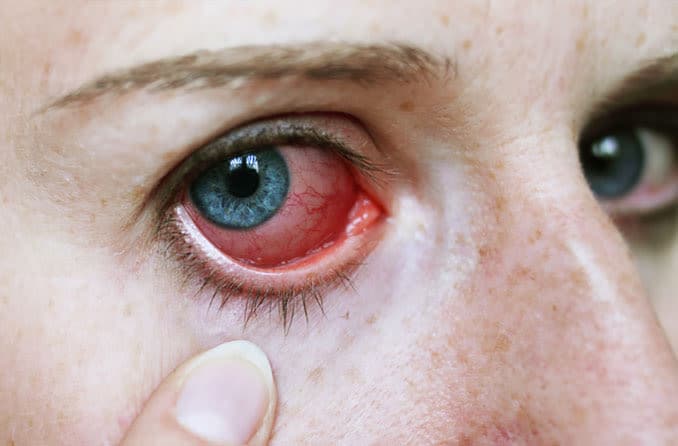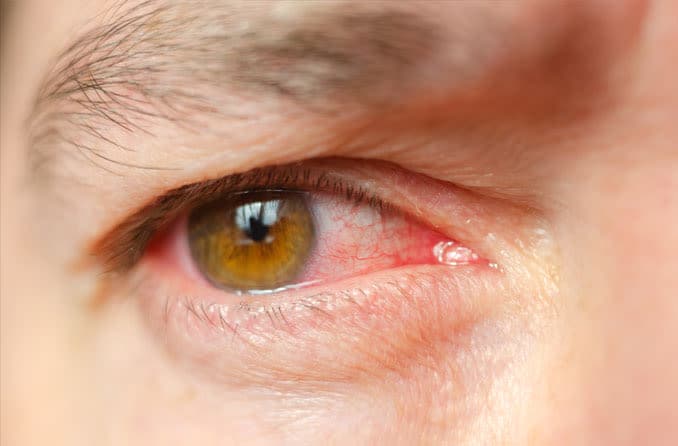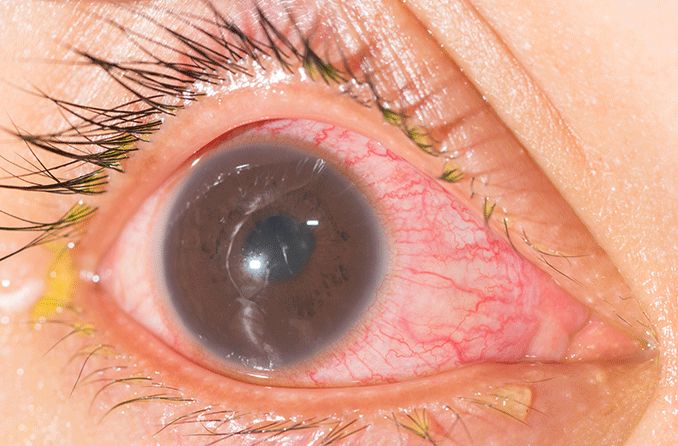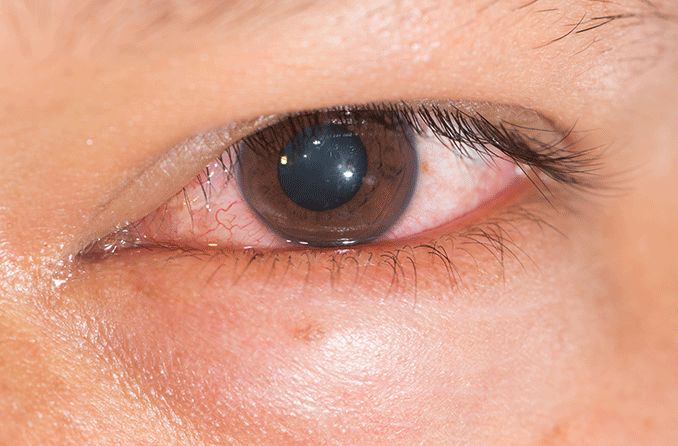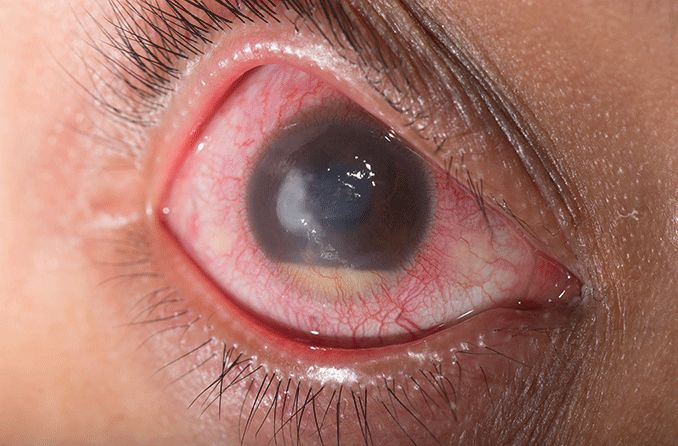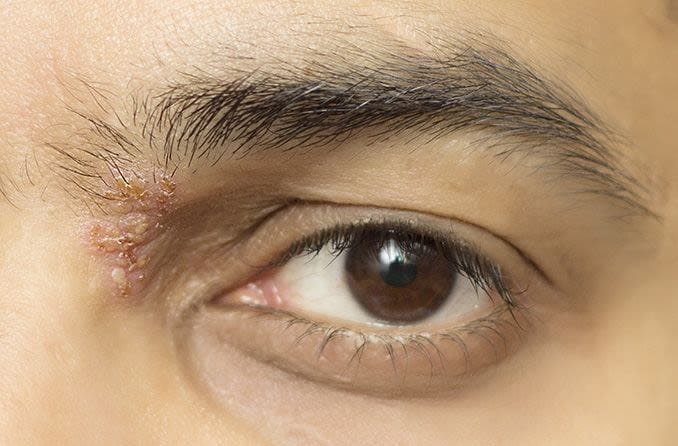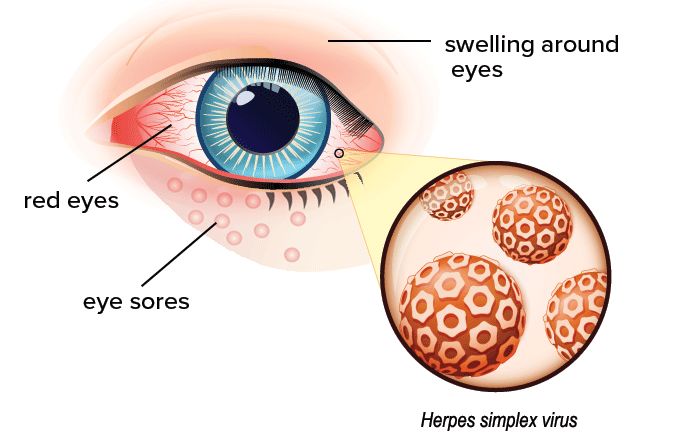Uveitis (pronounced you-vee-EYE-tis) is inflammation of the uvea — the middle layer of the eye that consists of the iris, ciliary body and choroid.
Uveitis can have many causes, including eye injury and inflammatory diseases. Exposure to toxic chemicals such as pesticides and acids used in manufacturing processes also can cause uveitis.
The type of uveitis you have is classified by where inflammation occurs in the uvea:
- Anterior uveitis is inflammation of the iris (iritis) or the iris and ciliary body.
- Intermediate uveitis is inflammation of the ciliary body.
- Posterior uveitis is inflammation of the choroid.
- Diffuse uveitis (also called panuveitis) is inflammation of all areas of the uvea.

This tiny drug implant (Retisert, Bausch+Lomb) is surgically implanted in the back of the eye, where it delivers sustained amounts of anti-inflammatory medication for treatment of uveitis.
Many cases of uveitis are chronic, and they can produce numerous possible complications, including clouding of the cornea, cataracts, elevated eye pressure (IOP), glaucoma, swelling of the retina or retinal detachment. These complications can result in permanent vision loss.
Uveitis occurs most frequently in people ages 20 to 60 and affects men and women equally. Researchers estimate uveitis is responsible for 10% of legal blindness in the United States and up to 25% in the developing world.
SEE RELATED: Chorioretinitis (a type of uveitis)
What causes uveitis?
In many cases, the cause of uveitis is unknown. In some cases, it it caused by infections or systemic disorders, including:
- ankylosing spondylitis
- Behcet's disease
- birdshot retinochoroidopathy
- brucellosis
- herpes simplex
- herpes zoster
- inflammatory bowel disease
- juvenile rheumatoid arthritis
- Kawasaki's disease
- leptospirosis
- Lyme disease
- multiple sclerosis
- presumed ocular histoplasmosis syndrome (POHS)
- psoriatic arthritis
- Reiter's syndrome
- sarcoidosis
- syphilis
- systemic lupus erythematosus
- toxocariasis
- toxoplasmosis
- tuberculosis
- Vogt-Koyanagi-Harada syndrome
- Phthisis Bulbi
Research has shown smoking is a risk factor for uveitis. "Cigarette smoke includes compounds that stimulate inflammation within the blood vessels, and this may contribute to immune system disruption and uveitis," said University of California San Francisco (UCSF) researcher and ophthalmologist Dr. Nisha Acharya, one of the study authors.
SEE RELATED: What is Hypopyon?
Uveitis symptoms
Symptoms of anterior uveitis include:
Intermediate and posterior uveitis usually are painless. Symptoms of these types of uveitis include blurred vision and floaters, typically in both eyes. Most people who develop intermediate uveitis are in their teens, 20s or 30s.
Diffuse uveitis has a combination of symptoms of all types of uveitis.
Uveitis and iritis treatment
The goal of uveitis treatment is to reduce pain and inflammation, prevent damage to the eye and restore any vision loss. The type of treatment prescribed depends on the type of uveitis a person has.

Possible uveitis treatments include:
- Corticosteroid eye drops
- Oral steroid medications
- Immunosuppressant therapy
- Corticosteroid implants surgically inserted into the eye
Corticosteroid implants are considered for treatment of posterior uveitis. They provide a sustained release of medication directly at the site of inflammation in the back of the eye.
If you have anterior uveitis, your doctor likely will prescribe, in addition to steroids, pupil-dilating eye drops to reduce pain. You also may need eye drops to lower your intraocular pressure if you develop high eye pressure due to uveitis.
If you have a known systemic condition that may be contributing your uveitis, your doctor will treat that as well.
If you suffer from sensitivity to light (photophobia) from chronic iritis or uveitis, ask your eye care professional about photochromic lenses. These eyeglass lenses darken automatically in sunlight to reduce photophobia-related discomfort when going outdoors.
READ NEXT: What is iridocyclitis?

